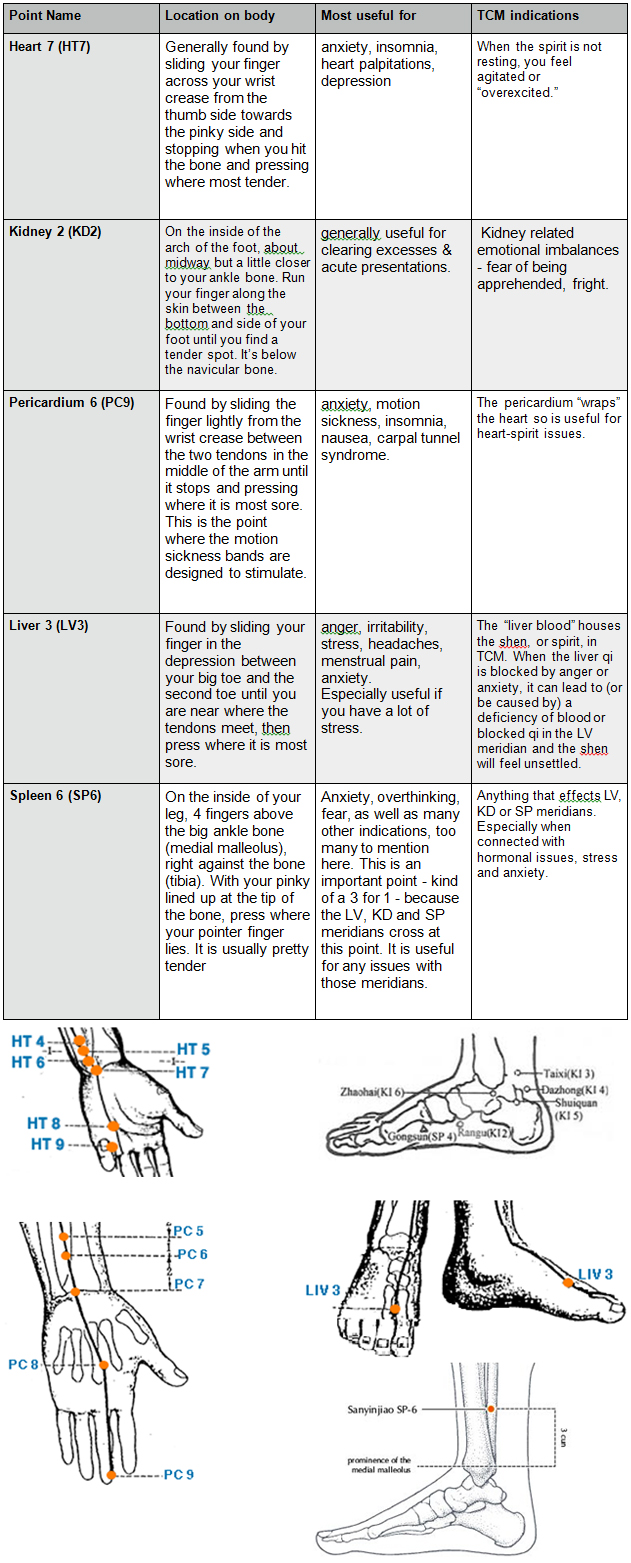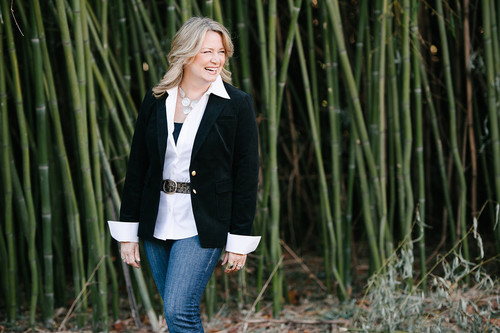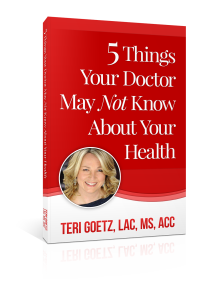As difficult as this period of isolation during the Coronavirus pandemic is, in many ways, I feel like I was born for this. (I know this sounds odd, but hear me out.) This has pushed every one of my psychological buttons: abandonment, isolation, fear of not having enough, to name a few. Here’s partly why.
Pushing psychological buttons
I grew up in the late 60’s and 70’s, when many of our parents were convinced that Russia was going to “nuke” us. I remember my first experience of empty supermarket shelves in detail. My panicked mother was buying boxes and boxes of powdered milk and potatoes, cans of soups and vegetables, and egg noodles. She was afraid that her family would run out of food. (Remember, she grew up during the Depression.) I have a vivid memory of seeing my mother’s anxious face as she saw the bare supermarket shelves. It frightened me, and imprinted me with a fear that someday, we truly might not have enough. (There is more involving recurrent nightmares, but I will spare you the details because we don’t need more fear images.)
Enter Coronoavirus
With shelves of supplies dwindling at times, it can easily cause panic. But don’t panic. I’ve got you.
As an avid organic gardener, a believer in food as medicine and essentially frugal, I have found ways to make healthy and tasty meals out of the dregs of the vegetables, a virtually empty refrigerator or with limited supplies. (My mother was also really frugal; She saved and reused aluminum foil and requested we use only 2 squares of TP for #1 and 4 squares for #2.)
During this period of isolation from the Coronavirus pandemic and perhaps depleted supplies, I thought it might be helpful to start a series of blog articles to help people get the most nutrition and flavor from their food supply. And, hey, if nothing else, this period of social isolation is teaching us to be less wasteful and hopefully more considerate of others, our planet and resources.
This first post is designed to help people get the most use out of their fresh fruits and vegetables.
Use every part of the vegetable or fruit
Some of the most obvious ways to be frugal with (and get more nutrition from) your vegetables is to use nearly every part of them, including roots and tops. Here is my own list, followed next time with some great suggestions from a wonderful book I love, Waste Not, put out by the James Beard Foundation and published by Rizzoli. A compilation of chef recipes, I highly recommend this book! It is a brilliant education for our currently wasteful way of living. (And they’re not just great for during the Coronavirus!)
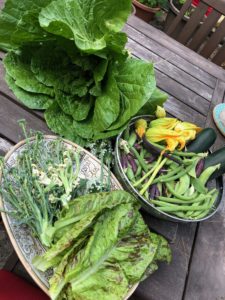
Each of the following deserves and will likely get its own blog post, but here are some highlights from my own list.
– Vegetable Soups
Use the less fresh vegetables and scraps. Start by sautéing onions and celery or the stalks of fennel (saving the bulb for other uses) in olive or coconut oil. Sprinkle liberally with spices (I’ll be writing another article on the best use of spices based on your physical state.) Saute and stir. One of my favorite flavor enhancers is to deglaze the pan with some sort of liquor (the alcohol burns off and the flavor remains. You can also deglaze with a little white or dark balsamic vinegar – although that has some sugar in it so will stick if you don’t watch it – or a little bit of white or red wine. (A great way to use those dregs left in the bottle). Throw in vegetables bits – including roots and leaves and stir to coat. Add liquid (bone broth, veggie or chicken or beef stock or water) to about two inches above the vegetables and simmer until soft. Puree or, if you like a more brothy soup, leave as is. You can also add potato or peels – the starch will thicken it and there are a lot of vitamins and some iron in the peels. If you want more depth of flavor, roast or caramelize the onions first.
– Vegetable broths and bone broth
Throw all the scraps from veggies and meat bones into a pot (or do them separately). Add some herbs (dried, fresh or just fresh stems), pepper corns, garlic and/or ginger (including skins). Include apple cores and skin, veggie peelings without wax, stems of greens, mushroom stems, Include a few whole carrots and onions if you have them to add depth.. Simmer until soft (12-24 hours for bone broth. Add a little acid like ACV or lemon juice to pull minerals out of bones.) Try roasting or caramelizing onions here, too. Strain.
– Risotto
A great way to use leftover veggies. Just add veggies toward the end of the cooking process.
– Veggie Burgers
Use leftover rice and beans for this, and throw in some grated veggies. This would also be a great way to use pulp from juicing to get more fiber and squeeze every nutrient out. If you feel you need a binder, add an egg or breadcrumbs. Or nothing! (Save and put dried ends of bread in food processor to make your own bread crumbs.)
– Teas from herbs
Use the stems (and leaves if you’re flush with fresh herbs) to make simple anti-viral teas. (And remember to dry herbs before they start to brown.) You can also use dried herbs for the teas, as well. Sage, oregano, rosemary, thyme, mint, and other stems all make a lovely tea. Try other herbs that are your favorites. Mix and match to see what you like best. A note on Dandelion: It’s highly abundant in your yard and a nutritional powerhouse. You can use the flowers, leaves and roots. (don’t pick from roadsides!) By the way, Cilantro stems add amazing flavor to cooked dishes, but I personally don’t love the taste of cilantro tea (even though I adore the flavor in everything else.)
– Bean and Seed Sprouting
An inexpensive way to consume dense nutrients. Easily done in a mason jar with cheese cloth.
– Stems of greens
Often cut out and discarded, the stems contain a lot of nutrients. If you didn’t use them in your soups, chop and saute a bit before adding the leaves to the pan. They add crunch, too.
– Juice your scraps!
– Regrow your leek, celery and scallion ends (among other veggies)
Place them in a shallow cup of water and putting them in sunlight. Change water daily.
– Use your leaves and the parts you usually toss
You can eat the leaves of broccoli, Brussel sprouts, cauliflower, turnip tops, beets, radish, carrot tops (in smaller quantities), as well as the broccoli stems and greens of scallions. If in doubt, google it, but all parts of most vegetables can be eaten. (Just wait until I get to weeds!) You can even make tahinis (thank you Waste Not) from your hard squash seeds like butternut, pumpkin and delicata.
– Refresh your wilting greens
This might be obvious, but putting the base of the stems in water or soaking in cold water can refresh greens and fresh herbs.
– Get creative with fruit peels and rinds
Add to a pitcher of water in the refrigerator. Pickle or make chutneys or jams (even watermelon rind). Add to vinegars and strain (you can also do this with herb stems.) Soak orange peels in vinegar for about 5-7 days, strain and add a dot of soap to make a cleaner.
There are a lot of other ways to use the bits of fruits and vegetables we usually toss. Get creative! We can also use leftovers in inventive ways like fried rice or risotto, pestos, pasta dishes, croquettes or adding to salads. I’d love to hear how you use scraps and leftovers in your kitchen during this Coronavirus social isolation period!
Stay safe, stay healthy and please, stay home.
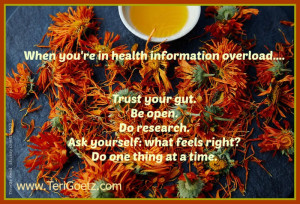 I’ve done it. Have you? A quick Google search about a symptom that has been bothering you or a recent diagnosis. Before you know it, the info is flooding your computer screen and you have more windows open than you can read in one day.
I’ve done it. Have you? A quick Google search about a symptom that has been bothering you or a recent diagnosis. Before you know it, the info is flooding your computer screen and you have more windows open than you can read in one day.